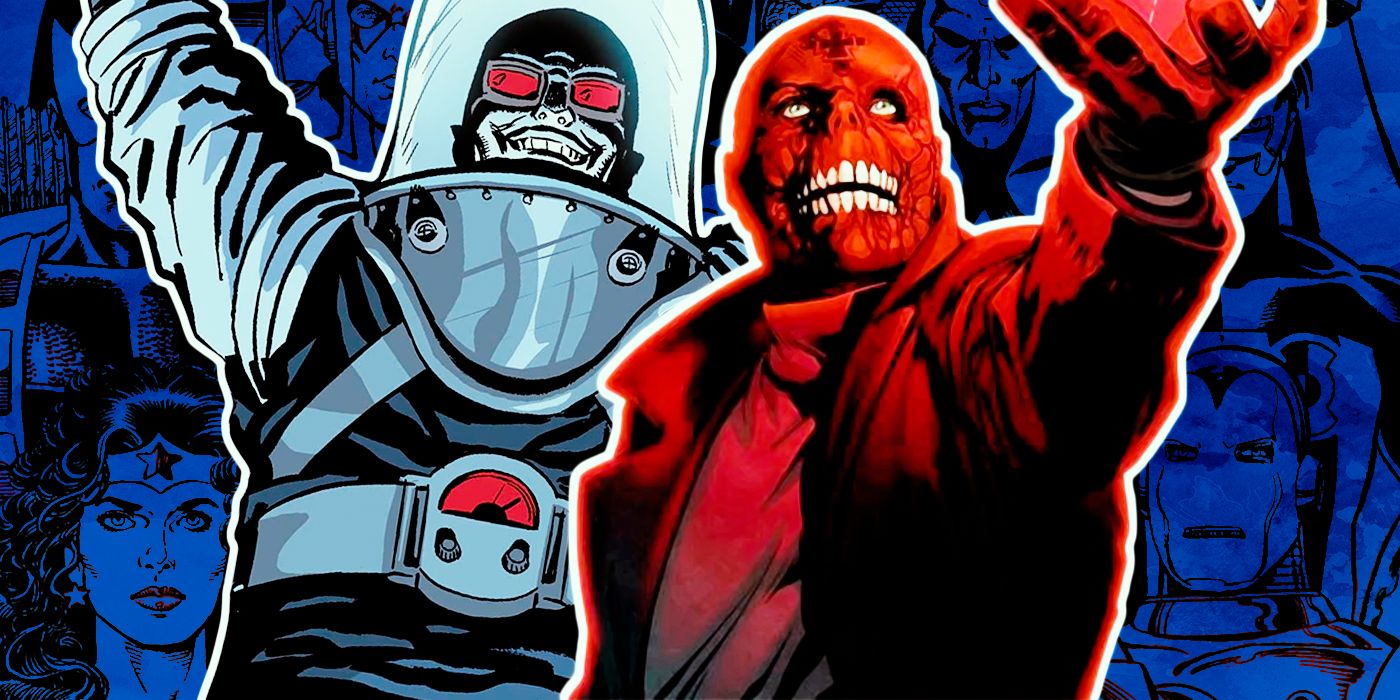DC and Marvel have always played on a series of tropes that define their characters for readers and movie audiences alike. However, one of the most famous tropes has been responsible for the ongoing decline of compelling villains. In recent years, fans have sparked a debate over what they want to see in their villains. The choices have ranged from Machiavellian rulers to cartoonish, Saturday-morning villainy like Skeletor and Megatron. However, one that causes the most division between fans is the idea of the sympathetic villain, characters driven to crime through necessity and tragedy rather than evil.While the sympathetic villain trope is as old as the comic book industry itself, the Marvel Cinematic Universe seems to be responsible for its explosion in recent years. Through characters like Killmonger, Zemo, and Taskmaster, Marvel Studios re-imagined key bad guys as victims of circumstance. While it may have added some depth, the greatest villains in comics and movies own their evil. While Elseworlds-style stories create space for deeper character studies, the notion of true evil in main comic continuity defines the hero’s struggle.The worlds of superheroes are, when all is said and done, defined by their villains. In the Golden Age of comics, heroes often fought nondescript carbon copy crooks with no personality or compelling motivation beyond money. This was arguably the biggest weakness of that era. As comics moved into the Silver Age, heroes and villains gained some color and personality. Suddenly, every villain had some unique gimmick, with a custom costume to go along. Today, virtually every comic book story depicts a hero going up against a super villain, whether one from their classic rogues gallery or a new threat in town. Over time, the comics community developed competing views concerning how villains are portrayed. In particular, many came to embrace the sympathetic villain.RELATED: 10 Best DC Comics About Villains, Ranked
DC and Marvel have always played on a series of tropes that define their characters for readers and movie audiences alike. However, one of the most famous tropes has been responsible for the ongoing decline of compelling villains. In recent years, fans have sparked a debate over what they want to see in their villains. The choices have ranged from Machiavellian rulers to cartoonish, Saturday-morning villainy like Skeletor and Megatron. However, one that causes the most division between fans is the idea of the sympathetic villain, characters driven to crime through necessity and tragedy rather than evil.
While the sympathetic villain trope is as old as the comic book industry itself, the Marvel Cinematic Universe seems to be responsible for its explosion in recent years. Through characters like Killmonger, Zemo, and Taskmaster, Marvel Studios re-imagined key bad guys as victims of circumstance. While it may have added some depth, the greatest villains in comics and movies own their evil. While Elseworlds-style stories create space for deeper character studies, the notion of true evil in main comic continuity defines the hero’s struggle.
The worlds of superheroes are, when all is said and done, defined by their villains. In the Golden Age of comics, heroes often fought nondescript carbon copy crooks with no personality or compelling motivation beyond money. This was arguably the biggest weakness of that era. As comics moved into the Silver Age, heroes and villains gained some color and personality. Suddenly, every villain had some unique gimmick, with a custom costume to go along. Today, virtually every comic book story depicts a hero going up against a super villain, whether one from their classic rogues gallery or a new threat in town. Over time, the comics community developed competing views concerning how villains are portrayed. In particular, many came to embrace the sympathetic villain.
#Marvel #DCs #Villains #Evil #Sympathetic
Note:- (Not all news on the site expresses the point of view of the site, but we transmit this news automatically and translate it through programmatic technology on the site and not from a human editor. The content is auto-generated from a syndicated feed.))



